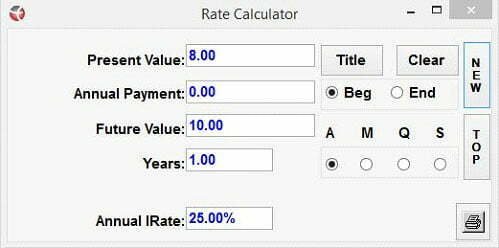November 17, 2020 - By: Brandon Jenkins
“The human species, according to the best theory I can form of it, is composed of two distinct races, the men who borrow, and the men who lend.”
— Charles Lamb

It’s one of the oldest, most proven forms of investing; lending capital to another—perhaps someone who can’t get traditional bank financing—in exchange for interest, and eventually your principal, in return.
A private lender lends money to helps borrowers:
⦁ purchase real estate (for a mortgage or a short-term bridge loan until permanent financing is put into place.)
⦁ rehab or improve commercial or residential real estate (again, often with a bridge loan)
⦁ start or expand business ventures
⦁ refinance credit cards or other debt
⦁ or fund a host of other projects—from kitchen remodels to weddings—through websites such as LendingClub.com and Prosper.com.
In recent decades, investing has come to be equated almost exclusively with stocks, bonds and mutual funds. However, there is greater volatility in the stock market, and many motivations to diversify at least a portion of your portfolio with private lending strategies. Here are seven reasons to consider becoming a private lender:
1. Historically proven.
Private lending has been a reliable way of generating profits and cash flow for literally centuries. We have records of private lending agreements as early as 3,000 B.C., showing people loaning to others for defined time periods in exchange for “interest” paid in wheat, livestock, shekels of silver, or other commodities. Interest rates of 20% – 40% were common in ancient times, though extraordinarily high rates became known as “usury” and became discouraged or outlawed. Below is a translation (from Fordham University) of a Babylonian contract for a real estate loan, circa 611 B.C., with an interest rate of eleven and one-third percent:
ONE mana of money, a sum belonging to Iqisha-Marduk, son of Kalab-Sin, (is loaned) unto Nabu-etir, son of Nabu-akhi-iddin, son of Egibi. Yearly the amount of the mana shall increase its sum by seven shekels of money. His field near the gate of Bel is Iqisha-Marduk’s pledge. (This document bears the name of four witnesses, and is dated) at Babylon, Tammuz twenty-seventh, in the fourteenth year of Nabopolassar, (the father of Nebuchadnezzar).
(Private lending contracts are slightly longer, now.)
Fast forward to the Great Depression in the late 1920’s and 1930’s. The stock market in the U.S. was just over 100 years old at the time, and had experienced many crashes and panics, as they were often called. But the 22 years preceding the Wall Street crash of 1929 saw an impressive, though deceptive, bull run.
Investors such as John Powell soon learned that what goes up may go down… way down. After severe losses, Powell swore off the stock market and instead, started lending money to those who needed capital to purchase or temporarily finance properties. For the next 3 decades, Powell was a private lender, his profits were steady, and he no longer feared market crashes .
2. Predictable returns.
When you invest in the stock market, you are placing a bet that the price will go up. Historically, this may be true more often than not. Yet we can observe times when this has gone horribly wrong! Nobody thought that Enron was going to go under, or that there was a possibility of the stock market losing more than 40% in a Financial Crisis
The exception? If your private lending deal is not properly constructed or vetted, there is a chance of loss. That does not necessarily mean that you’ll lose your capital, but in cases where the borrower was paying you directly, a property could have to be foreclosed on then sold to get your cash out of a property.
3. Excellent cash flow.
In addition to passing the test of time with flying colors, banks and other institutions that operate as lenders are some of the most profitable businesses in the world. Unfortunately, many people tend to be borrowers, not lenders! So if you’ve got money to lend, congratulations, you can put it to good use.
In this low-interest environment, you can earn several times what your bank is paying, without the unpredictability of the stock market. And if interest rates at banks go up, so will interest rates for private lenders! That’s because there will always be people who need to borrow money outside of mainstream channels.
Today, investors who want more income from their existing assets can earn high single digit, even low double digit interest rates (for accredited investors only) by becoming private lenders. In many cases, the monthly income is contractually agreed upon, so you know exactly what cash flow you can expect.
4. Diversification.
Not only does private lending help diversify a stock heavy portfolio, but through private lending, it is also very easy to diversify amongst different types assets, or real estate investments in different locations. Of course, it is handy to do business locally. But you might live in an area where it is difficult to earn a decent ROI. Read, “Is Your Real Estate Portfolio Diversified?”
And of course, you can practice private lending with different types of assets, such as a real estate bridge loan, a fractional investment in real estate (apartment building) equity, or a collection of peer lending loans. (With the latter, you’ll want to diversify into many small loans to reduce your risk.)
5. A secured investment.
If you are lending on real estate, your investment will likely be secured by the property itself, perhaps with a first deed of trust, although there are several different ways that private lending deals can be structured. (Just make sure you’re not last in a long line to be paid!)
Whether you are lending directly or through a company that vets the deals, you’ll want an appraiser to verify that the property is worth substantially more than the amount you are lending. The lower the loan-to-value percentage, the more security you have for your investment.
In a worse-case scenario that requires a foreclosure, you could actually reap additional profits for your extra effort and trouble. Alternatively, many private lenders prefer to work with companies that manage the transaction and pay them directly, significantly reducing their risk.
Of course, not all private lending opportunities (such as those through prosper or lending club.com) are secured by a real asset. In the case of peer lending, the borrower’s income and good credit are your “security.” Peer lending returns are tiered so that lower-risk loans (with high-credit score borrowers) pay less interest, while higher-risk loans pay more interest, yet also have higher default rates.
6. Leveraged investment opportunities.
It’s called arbitrage: By investing money you have borrowed at a lower rate to earn a higher rate, you can earn an exceptional rate of return and expand your investments. A couple examples:
Let’s say you have a daughter who is getting settle in her first home. She purchased some furniture, window coverings, and appliances from various stores on credit. Now she’s got $6000 of debt at rates of about 21%!
You hate to see her paying 21%. You borrow $6000 against your life insurance policy at 8% to take care of the debt, and they happily agree to pay you back at 10% interest. You are actually earning 25% on the money that you are borrowing, and she is saving interest big-time.
That’s a small, simple example. Let’s look at a large, lucrative one. You leverage your whole life cash value as collateral and borrow $50k from a bank at 5%. Then you put the money into a bridge loan earning 7%. Your rate of return is actually 40% on the money.
To understand this concept of arbitrage more thoroughly, watch this financial calculator video from Truth Concepts financial software developer Todd Langford, as he explains “How Banks Make Money.” (It’s not how most people think!)


7. You look like a genius.
When—or if—you tell your friends you are going to be a private lender, chances, are, they’ll be concerned for you. They’ll tell you it’s risky (and it can be, if you do it yourself!) People may share horror stories or even talk you out of it.
But when you’re an experienced private lender, and you tell your friends that you’ve been collecting healthy cash flow for years, with none of the losses or stress of the stock market, they’ll think you’re really smart! (And of course, you are.)
Would you like to turn an existing asset into steady, reliable cash flow? Become a private lender and use the investment strategy with the longest track record in history! Contact us and we will get you more detailed information and help you identify which options might work best for your situation.
© Prosperity Economics Movement
